Birds are fascinating creatures that are a common sight in many HDB estates in Singapore. In fact, these feathered friends have become an important part of our urban ecosystem and a source of joy for many residents.
From the common myna to the more elusive kingfisher, there is a diverse range of bird species that can be found around HDB flats. These birds often adapt to their surroundings and develop unique behaviors, making them a delight to observe.
However, as much as we enjoy their presence, it is also crucial that we learn to coexist with them and protect their habitats.
This article explores the different bird species that can be found in HDB estates and the measures we can take to ensure their survival.
1. Pied Triller
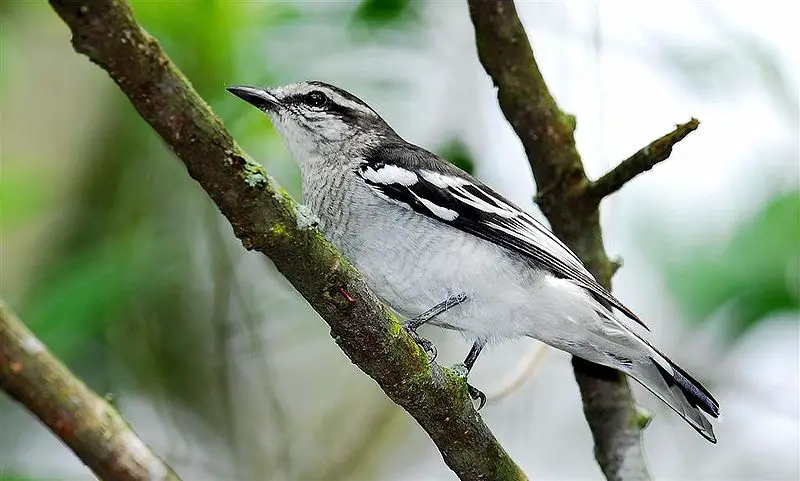
The Pied Triller is a species of bird found in parts of South East Asia. It belongs to the family Campephagidae and can be seen in Brunei, India, Indonesia, Malaysia, Philippines, Singapore and Thailand.
This black-and-white passerine has an eye patch that sets it apart from other birds its size. Its underparts are white with rufous upperparts and wings as well as grey crowns on both males and females giving them a unique look.
They mainly feed on insects but have also been observed eating fruits from trees or shrubs occasionally.
In terms of habitat they prefer forests but can adapt to secondary growth habitats too if needed for survival purposes making them quite adaptive creatures indeed.Scientific classification:
| Kingdom | Animalia |
| Phylum | Chordata |
| Class | Aves |
| Order | Passeriformes |
| Family | Campephagidae |
| Genus | Lalage |
| Species | L. nigra |
Also Featured In: Birds of the Philippines, Common Philippines Birds
2. Sunda Pygmy Woodpecker
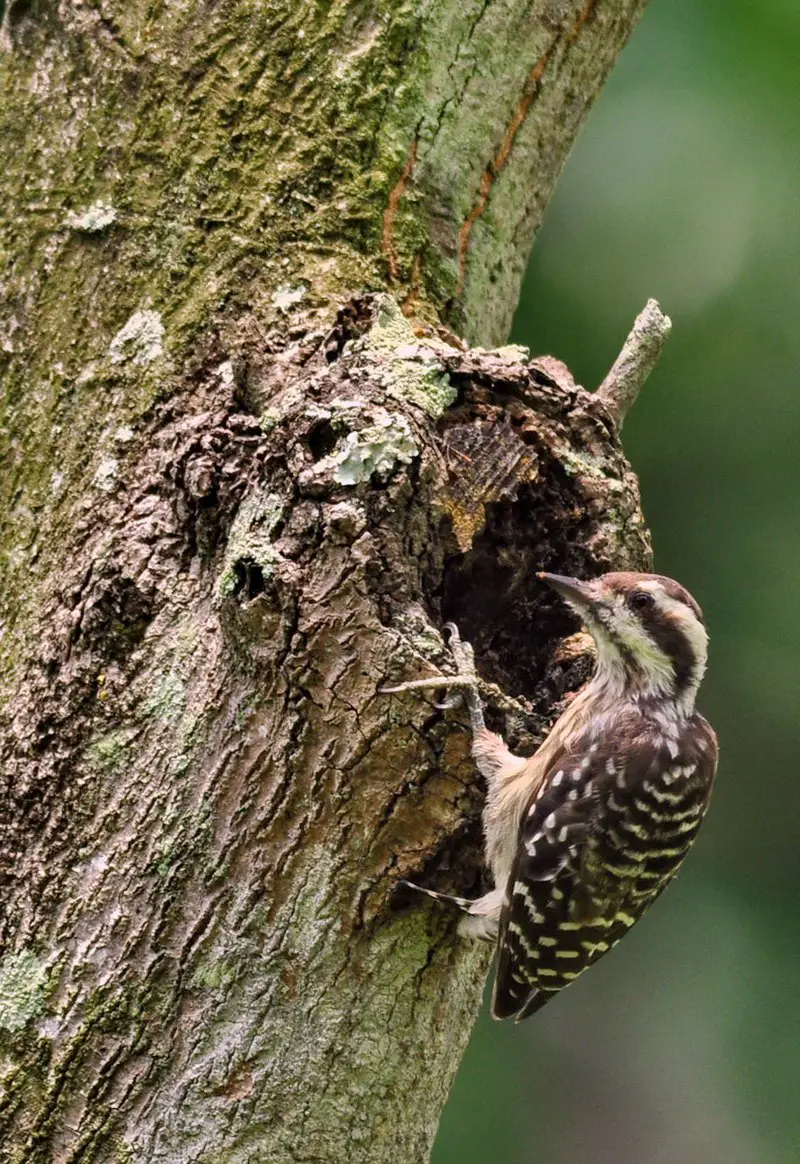
The Sunda Pygmy Woodpecker is a species of bird that can be found in Brunei, Indonesia, Malaysia and Singapore.
It has an average size range of 11.5-12.5 cm and its head is greyish brown with dark brown ear covers which contrast nicely against its light coloured body.
Its wings are long with white spots on them while the tail feathers have yellow tips to them giving it a unique look when seen up close or from afar.
This woodpecker mainly feeds on insects but will also eat small fruits if they come across any during their travels throughout the dense forests they inhabit.
They make their nests high up in trees where they stay safe from predators and other dangers posed by living near open land such as humans or animals who may threaten them for food sources or shelter locations should the need arise..Scientific classification:
| Kingdom | Animalia |
| Phylum | Chordata |
| Class | Aves |
| Order | Piciformes |
| Family | Picidae |
| Genus | Yungipicus |
| Species | Y. moluccensis |
Also Featured In: Singapore Birds,
3. Brown-Throated Sunbird
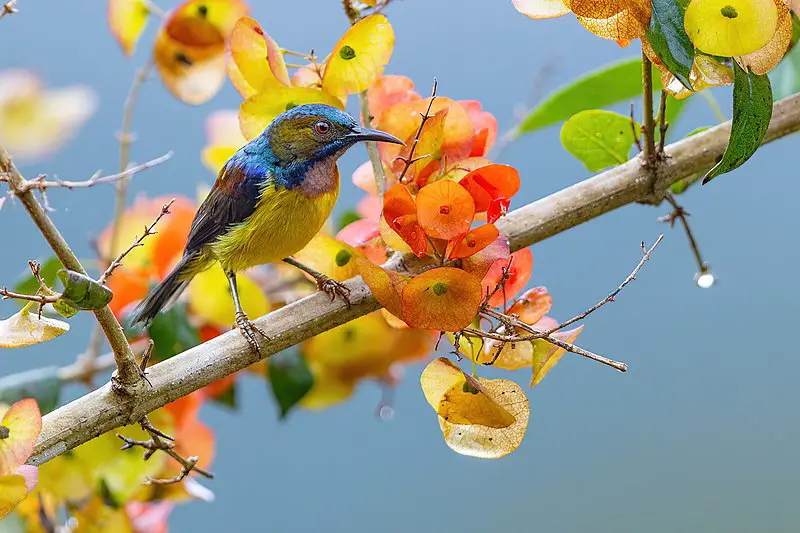
The brown-throated sunbird, also known as the plain-throated sunbird, is a small bird that belongs to the family Nectariniidae.
Commonly found in south-east Asia, it inhabits a variety of semi-open habitats, from Myanmar to the Lesser Sundas and west Philippines.
This species is recognized by its brownish plumage and distinctive brown throat, which differentiates it from the grey-throated sunbird species found in the Philippines.
The brown-throated sunbird has a slender beak that allows it to feed on nectar from flowers and insects.
It is known for its acrobatic flight and can often be seen flitting rapidly between flowers in search of food.
These birds are essential pollinators for many plant species, making them an important contributor to the ecosystems in which they live.Scientific classification:
| Kingdom | Animalia |
| Phylum | Chordata |
| Class | Aves |
| Order | Passeriformes |
| Family | Nectariniidae |
| Genus | Anthreptes |
| Species | A. malacensis |
Also Featured In: Birds that Commonly Found in Bali, Birds that Live in Kuala Lumpur
4. Scarlet-Backed Flowerpecker
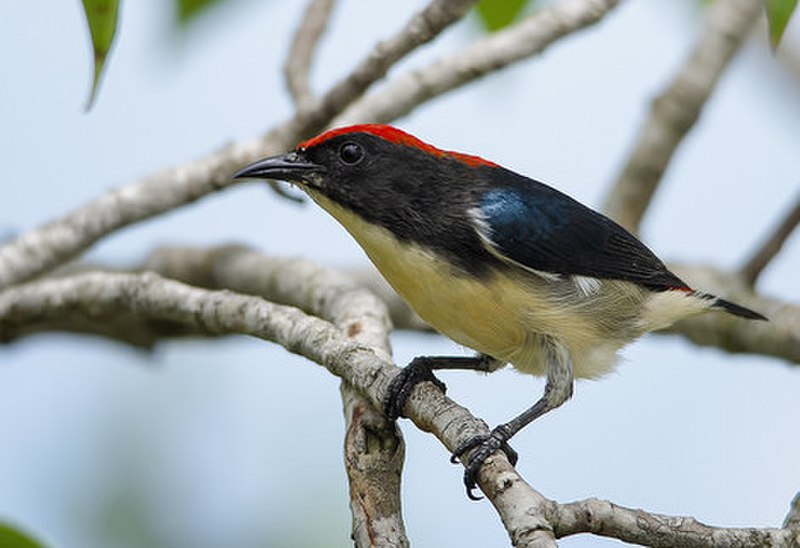
The Scarlet-backed flowerpecker bird is a passerine species that belongs to the Dicaeidae family. These birds are sexually dimorphic, meaning that males and females look different from each other.
The male has striking navy blue upperparts, and a red streak runs down from its crown to its tail coverts. On the other hand, females and juveniles are predominantly olive green.
Scarlet-backed flowerpeckers are commonly found in subtropical or tropical moist lowland forests and sometimes in gardens.
Their diet mainly comprises of nectar and insects. These birds are known for their active movements and can often be seen flitting through the forest canopy in search of food.
Scarlet-backed flowerpecker birds are fascinating creatures and attract bird watchers due to their distinctive colors and behaviors.Scientific classification:
| Kingdom | Animalia |
| Phylum | Chordata |
| Class | Aves |
| Order | Passeriformes |
| Family | Dicaeidae |
| Genus | Dicaeum |
| Species | D. cruentatum |
5. Golden-Bellied Gerygone
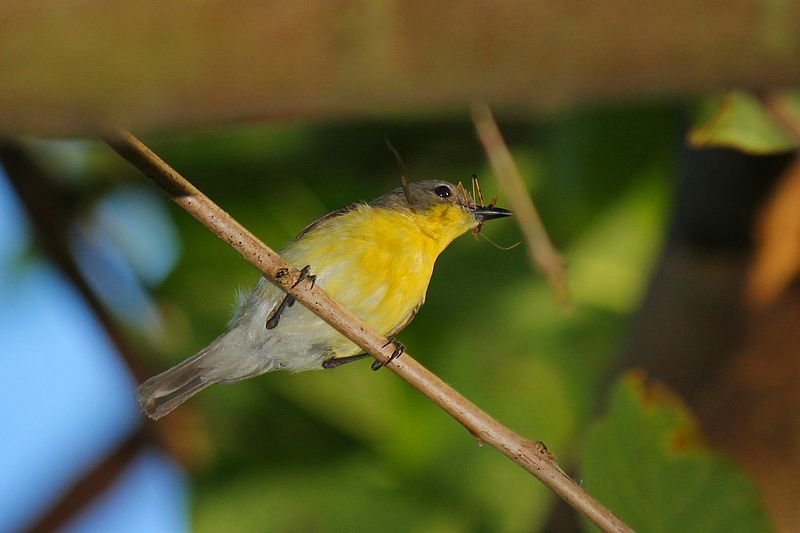
The Golden-bellied gerygone is a bird that belongs to the Acanthizidae family. This species can be found in Brunei, Indonesia, Malaysia, the Philippines, Singapore, and Thailand within lowland forests and mangrove forests.
Gerygone sulphurea is composed of different subspecies.Scientific classification:
| Kingdom | Animalia |
| Phylum | Chordata |
| Class | Aves |
| Order | Passeriformes |
| Family | Acanthizidae |
| Genus | Gerygone |
| Species | G. sulphurea |
6. Little Bronze Cuckoo
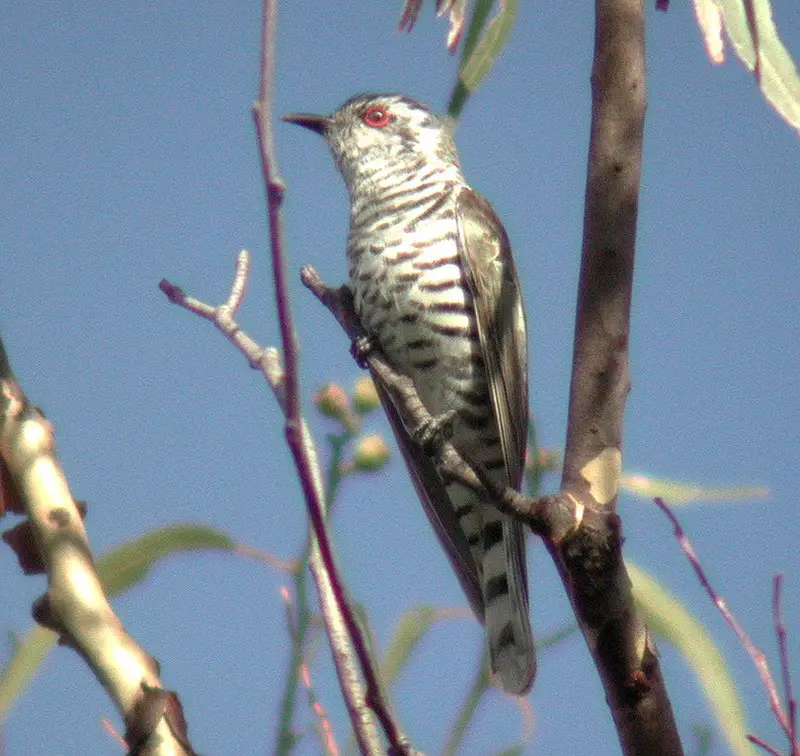
The Little Bronze Cuckoo, a member of the Cuculidae family, can be found in Southeast Asia, New Guinea, and northern and eastern Australia, in subtropical or tropical moist lowland forests.
As the world’s smallest cuckoo bird, it only weighs around 17 grams and measures 15 cm in length. It is distinct from other cuckoos with its bronze-green body, white undertail, and long tail with a white tip.
The male bird is known for its unique call “pia-pia-pia,” which it uses to attract a mate during breeding season.
Little Bronze Cuckoo subspecies rufomerus and crassirostris are often considered separate species due to their distinct physical characteristics.
The Little Bronze Cuckoo is an interesting bird to observe in the wild with its small size and beautiful coloring.Scientific classification:
| Kingdom | Animalia |
| Phylum | Chordata |
| Class | Aves |
| Order | Cuculiformes |
| Family | Cuculidae |
| Genus | Chrysococcyx |
| Species | C. minutillus |
Also Featured In: Common Townsville Birds, Most Common Birds in Negros
7. Aerodramus
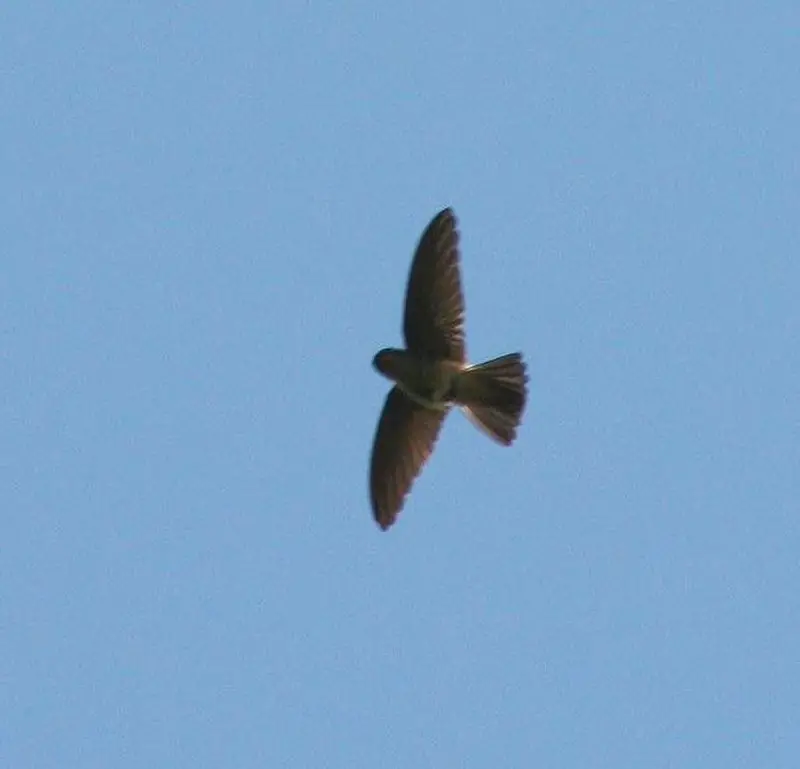
Aerodramus is a group of small, dark-colored birds that dwell in caves. They belong to the Collocaliini tribe of the swift family and are exclusively found in tropical and subtropical areas in Oceania, southern Asia, and northeastern Australia.
The species of Aerodramus share a common ancestor with Collocalia; however, they were separated into their own genus by American ornithologist Harry Church Oberholser in 1906.
These birds are known for their unique nesting behavior, as they prefer to build their nests within caves.
Their small size and dark appearance make them inconspicuous, allowing them to blend in with their environment.
While they may not be well-known to the average person, Aerodramus birds play an important role in maintaining the balance of ecosystems in their habitats.Scientific classification:
| Kingdom | Animalia |
| Phylum | Chordata |
| Class | Aves |
| Clade | Strisores |
| Order | Apodiformes |
| Family | Apodidae |
| Tribe | Collocaliini |
| Genus | Aerodramus Oberholser, 1906 |